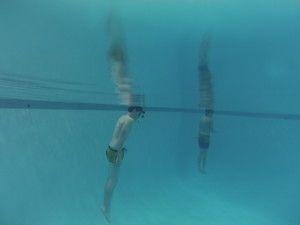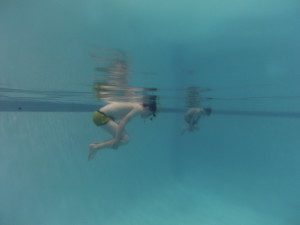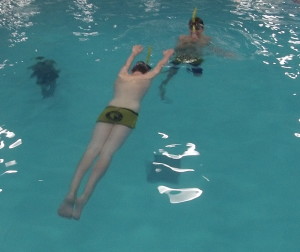CSCAA100 Greatest Coaches
On December 7th, 2021, as a part of the College Swimming & Diving Coaches Association of America’s (CSCAA) Centennial Celebration, the association has named its list of 100 Greatest College Swimming & Diving Coaches of the past 100 years.
“I am completely humbled to be named to this list. I consider myself blessed to have been coached by or work with some of the best coaches in America, which no doubt had great influence on my career in swimming.
There are two of my mentors included on this list that have been very influential to my career in swimming: The first is the greatest of all-time, James “Doc” Counsilman, who was my college coach at Indiana University and the 1st to give me a chance to coach at the age of 22, and I miss him constantly since he left us. The other is Jim Richardson, who was gracious enough to allow me to come work with their camps and collegiate program for two years at the University of Michigan. We have remained friends and collaborators since then.
However, I would be remiss if I didn’t mention two other coaches who have passed on, but who effected me greatly. Paul Blair, who I swam for at the end of my career at the Little Rock Racket Club, and most importantly Dr. Samuel J. Freas. Sam taught me how to swim at the Scarsdale Golf Club in New York when I was 5 and then coached me at LSU after I graduated from college. It was Sam, who shaped my ability to understand the mental side of competing and coaching. He should surely be on this list as all Sam did, was win and influence athletes both physically and spiritually for decades. One day soon I hope he joins us.”
Just over 500 coaches were nominated. A blue ribbon committee of fifty eight voters selected from 263 finalists, each focusing on a particular sport (swimming or diving) and Division. A steering committee consisting then vetted and finalized the selections.
What ties them together, is a record of exceptional success vis-à-vis their peers. Collectively the coaches account for 346 NCAA and NAIA team titles plus an additional 260 individual diving titles. “The voters and committee really deserve a lot of credit for making performance the key criterion” explained CSCAA Executive Director Greg Earhart, adding, “they ensured that each of the three NCAA divisions and the NAIA were represented, yet made sure that a coach’s selection was not simply a product of their longevity or service to the sport.”
Founded in 1922, the College Swimming and Diving Coaches Association of America (CSCAA), is the nation’s first organization of college coaches. The mission of the CSCAA is to advance the sport of swimming and diving with coaches at the epicenter of leadership, advocacy, and professional development.
The anniversary will culminate with the Association’s convention and awards banquet, May 2-4, 2022 in Rosemont, Illinois.
Complete Video Analysis for Competitive Swimmers
At Swim Fever, we offer a Complete Video Analysis for Competitive Swimmers using the SideLine Scout video replay systems. SideLine Scout is undeniably the best and most feature laden video and analysis product available to swimming coaches today. We here at Swim Fever have been using this system and consulting them in technological developments since 2019.
With SideLine Scout we will show you what is actually happening when you swim. One of the most useful tools you can have as an athlete is to actually SEE what you are doing when you move through the water.
Relating between what you feel you are doing in your swimming to what you actually see you are doing is the one of the most important variables in successful Stroke Shaping™.
Whether it be in a private 1-on-1 session or group/team setting. Swim Fever can help you compile that information edge you need to improve all aspects of your swimming.
For more info contact us here
Swimming Technique Clinics in Boston and New England
Swim Fever’s workshops provide an excellent and unique opportunity for a great learning experience in small groups with unusually high coach to swimmer ratios.
One of the best learning tools athletes have at their disposal are different opinions. There are many different ways to explain the same process. Just as with an academic tutor, sometimes it takes a different way of teaching the same subject to get the process to “click in” for that particular individual.
At Swim Fever, our workshops are designed to give a complete background and rational technical progression to the topic at hand. Our complete walk-throughs usually include significant time using video replay to show the participants what they are actually doing in real-time.
For more info inquire below:
In part I of “Know your H2O Gravity” we stressed that every individual body is unique and reacts differently to the gravity properties of water, and that why this is true is not as important as how we use this knowledge.
What we are working on with the senior group over at Bernal’s Gator SC are very simple buoyancy drills. The goal for the athletes is to learn to move and stabilize their bodies in different positions. The key to success here, however, is to do this WITHOUT using your hands and feet to reach each position.
Mastering your own personal water gravity and being able to use this knowledge to your advantage while training and racing depends on your ability to make slight adjustments with your core. For this topic we will define the core as the area from the top of your head to your hips. Since your hands and feet will/should be actively occupied while swimming with pulling and kicking, they are not useful for body position adjustments while racing. This is why we don’t allow the swimmers to use them in buoyancy drills.
Here are the positions we have been using and, as you will notice, we use a snorkel so they don’t have to worry about getting air and can focus solely on the movements.
The Pencil
Stabilizing the body in an upright position.
(Matt here is not quite there, as we would like to see him completely upright)
The Egg
Stabilizing the body w/back of neck and hips on surface.
(Again, not quite there but he is working on which movements allow his hips to rise to the surface. Yes they do use their arms and legs to move, but not their hands or feet)
Prone
Stabilizing the body w/back of neck, hips and heels on surface.
(Matt’s heels are just below the surface in this picture)
These are just random pictures taken as we were working on buoyancy last night. What we emphasize with the kids is to NOT use their hands or feet to move your body into the proper positions, but just their core.
The steps would be:
1) Position your body into the Pencil using just your core. Make sure that you are upright and your arms are pinned to your side and not used to maneuver yourself. Always explore your buoyancy by moving out of position and back into position using just your core.
2) Once stabilized in the Pencil, defined by being able to stay there for 30″ to 45″, proceed by moving from Pencil to the Egg. Make sure that your movements are as smooth and slow as possible. We do not want to have any jerking movements. Again do not use hands and feet to move, but use core and the slow movements of your arms and legs.
3) Once stabilized in Egg, with the ability to stay there for 30″ to 45″, start moving slowly to the Prone position.
There can be many variations of these simple drills. We always ask the swimmers to experiment in each position by moving themselves out of position and then discovering what gets them back into the proper position. The more they learn how to “right” their bodies the better. The whole process is one of adjustments and corrections. Learning how each of their bodies react in the water.
The advanced versions we use are altering the Prone position into a Prone “Y” and Prone “X”, where their arms and legs make the corresponding letter on the water in that horizontal Prone position.
As always, make it fun!
Most human bodies react similarly to “land gravity”. Some may “fly” through the air better than others, but for the most part, no matter how high or fast they climb…physics has taught us that eventually they will come crashing down.
However, in the water bodies are VERY different, and the body works and rides through water very differently than it does on land. Sounds simple, but this is a topic we coaches need to ALL understand better.
Rules of thumb on H2O Gravity:
1) It IS personal. All bodies have different buoyancy ratios. There is no need, in my opinion, to ask why this is. Just consider it a given in our coaching book of rules.
2) Teach your swimmers how to know their personal water gravity variables. All swimmers need to know how their bodies float in different positions. This is very important for them to know how to correct the body position in workouts and races when it is crucial.
3) Bad body position WILL slow you down. Nothing can overcome a body that is not in it’s most ideal position to move that specific body forward in water.
4) See rule #1.
Ok… Great… How do we do this? How can you teach your swimmers, or yourself for that matter, to become more aware of how their/your body moves through and reacts to the water best?
Ahh, now comes the learning part! To teach something you MUST learn it, understand it and know HOW to teach it correct?
We are working on this skill set right now with a group of kids at Bernal’s Gator Swim Club in Boston!
In part II, I will add some of things we are working on, and most importantly WHY we are doing what we are doing!


